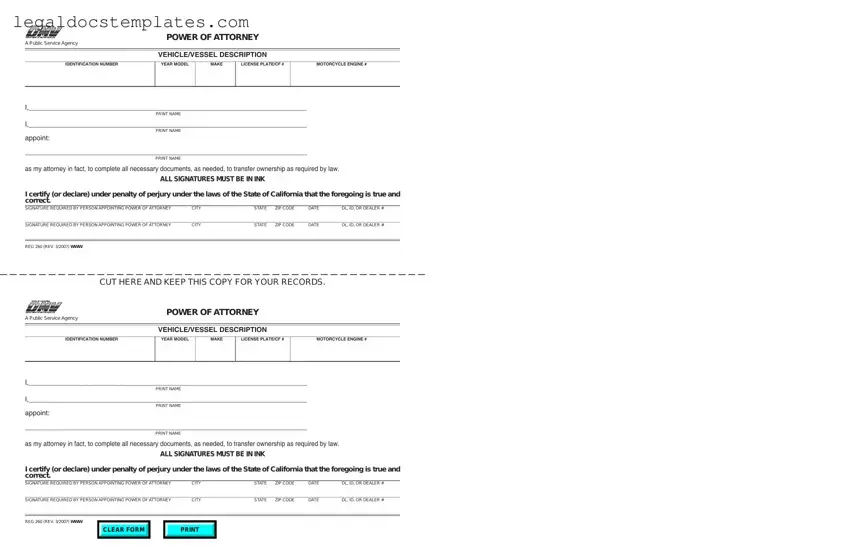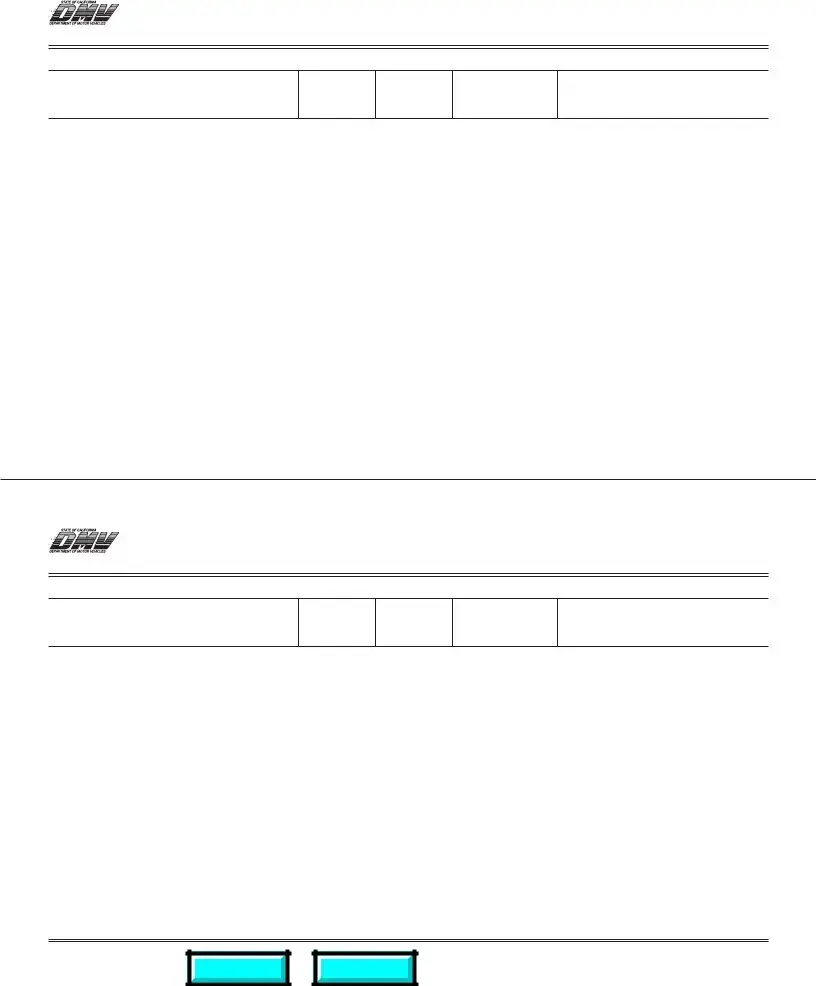The Vehicle Power of Attorney (POA) REG 260 form is akin to the General Power of Attorney document, as both empower a selected agent to make decisions on behalf of the principal. However, the Vehicle POA REG 260 specifically focuses on vehicle-related matters, such as registration and ownership transactions, while a General Power of Attorney can cover a broad range of legal and financial affairs.
Similar to the Medical Power of Attorney, the Vehicle POA REG 260 designates an agent to act on the principal's behalf. The distinction lies in the scope of authority; the Medical Power of Attorney grants an agent the power to make health-related decisions, whereas the Vehicle POA pertains strictly to tasks involving a vehicle, like signing documents for the sale or purchase of a vehicle.
The Durable Power of Attorney shares similarities with the Vehicle POA REG 260 in that it remains effective even if the principal becomes incapacitated. This feature is crucial for the continuous handling of the principal's affairs without interruption. Nonetheless, the Durable Power of Attorney encompasses a wide range of authorities beyond vehicle matters, potentially including financial and health care decisions.
The Vehicle POA REG 260 and the Limited Power of Attorney (LPOA) both restrict the agent’s power to specific tasks. The key difference is that the LPOA can apply to various areas such as real estate, financial institutions, or legal matters, depending on the limitations set by the principal, while the Vehicle POA is exclusively for vehicle-related transactions.
Comparatively, the Real Estate Power of Attorney and the Vehicle POA REG 260 document both allow an agent to make decisions concerning property. However, while the Real Estate Power of Attorney is specialized for buying, selling, or managing real estate property, the Vehicle POA focuses on automobile-related actions, including the managing, buying, or selling of a vehicle.
The Financial Power of Attorney is similar to the Vehicle POA REG 260 in that it grants an agent authority to manage the principal’s financial affairs. Nevertheless, the scope of the Financial Power of Attorney is much broader, encompassing all financial decisions – from managing bank accounts to investment decisions. In contrast, the Vehicle POA targets only vehicle-related financial activities, such as transactions involving the purchase or sale of a vehicle.
Just like the Vehicle POA REG 260, a Child Care Power of Attorney allows an individual to designate another person to make decisions on their behalf. Yet, its purpose is distinct; it concerns the care and custody of a child, granting the agent authority to make decisions related to the child's welfare, education, and health care, unlike the Vehicle POA, which is focused solely on vehicle transactions.
Finally, the Springing Power of Attorney resembles the Vehicle POA REG 260 in its conditional nature, as it comes into effect only under circumstances defined by the principal, such as illness or disability. However, while the Vehicle POA may not necessarily have such conditional activation, the concept of designating authority based on specific conditions is a common thread. The Springing Power of Attorney can cover a range of decisions, not limited to vehicle-related matters but including wide-reaching legal, financial, and health care decisions as dictated by the principal’s stipulations.

